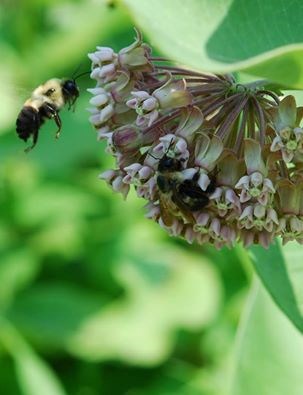
John Baker photo, https://en.wikipedia.org/wiki/Two-spotted_bumble_bee#/media/File:Bombus_bimaculatus.jpg. 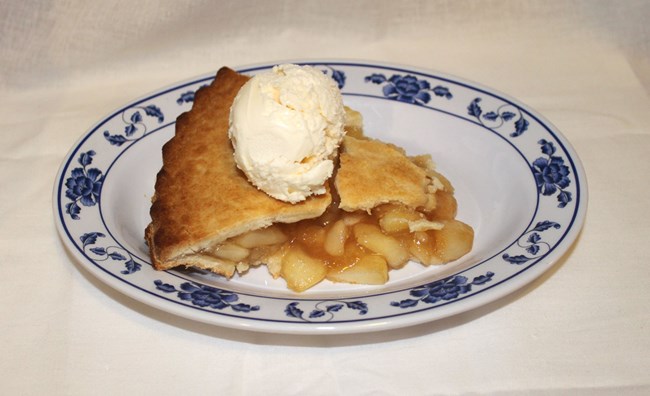
Dwight Burdette https://en.wikipedia.org/wiki/Pie_à_la_Mode#/media/File:Pie_A_La_Mode.JPG 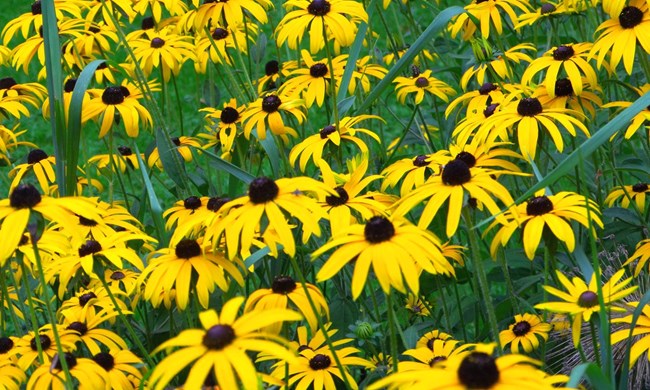
Photo by: grassrootsgroundswell https://commons.wikimedia.org/wiki/File:Black_Eyed_Susan_(8807941048).jpg Who's tired of mowing their lawn? With the recent rains, the grass is growing like crazy. Help yourself out and the pollinators by planting some native wildflowers (even a small patch would help). Not only will the wildflowers provide a source of nectar for pollinators, but it will decrease the size of your lawn. Yay! Less mowing! 9/13/2016 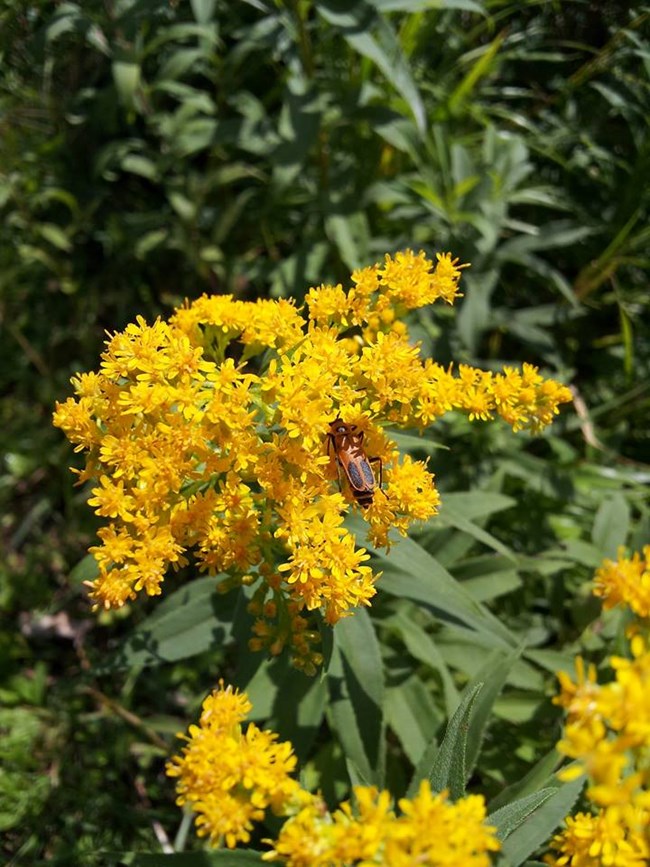
NPS photo 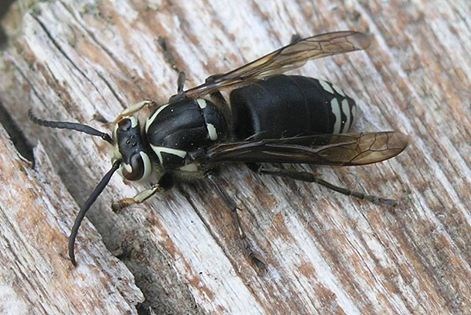
4-1 Marvin Smith https://commons.wikimedia.org/wiki/File:Baldfaced_Hornet_-_Dolichovespula_maculata.jpg Descriptive TranscriptHoney bees flying in and out of a man-made hive. Two bees work to remove an intruding insect from the hive. Once the insect is removed, the bees continue flying in and out of the hive.
Visit our keyboard shortcuts docs for details
For the most part, honeybees are pretty calm and docile. But when they have honeystores to protect, they have a sting and they will use it! In this video, 2 bees remove an intruder in their hive while foragers bring back a variety of nectar and pollen. No rest for these busy little bees! 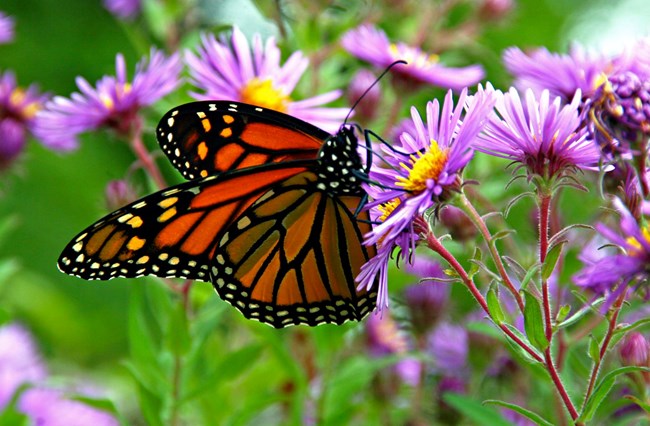
Liz West The Monarch Butterfly is a widely recognized butterfly in the U.S. with a fascinating life cycle which includes a massive migration. In the summer months, Monarchs can be found in the U.P., but they can't withstand the cold winters. So they migrate south, like many birds, to the Southern U.S. and Mexico to overwinter. The adults pollinate many varieties of wildflowers as they feed on nectar, but the caterpillars need milkweed to survive. Keep an eye out for these beautiful pollinators in your wildflower gardens! Learn more about monarchs and their migration: https://fs.fed.us/wildflowers/pollinators/Monarch_Butterfly/migration/index.shtml8/2/2016 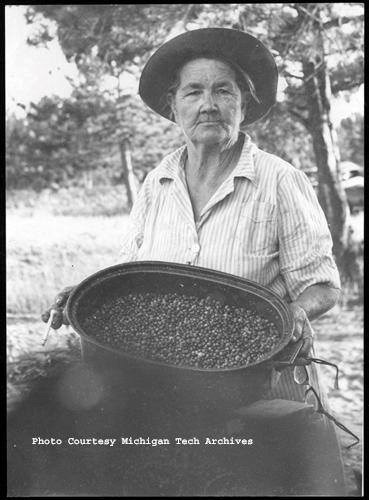
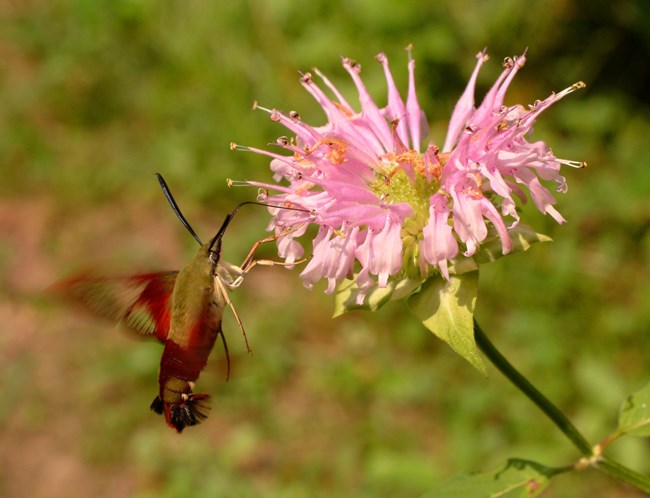
Bob Judson It's a hummingbird! No...wait a second. When we hear the word "pollinator" we think of bees, but other tiny creatures also take part in this important job. The hummingbird clearwing moth is native to the Upper Peninsula. The adult feeds on nectar from a variety of plants and in the process, transports pollen from flower to flower. https://www.fs.fed.us/wildflowers/pollinators/pollinator-of-the-month/hummingbird_moth.shtml7/19/2016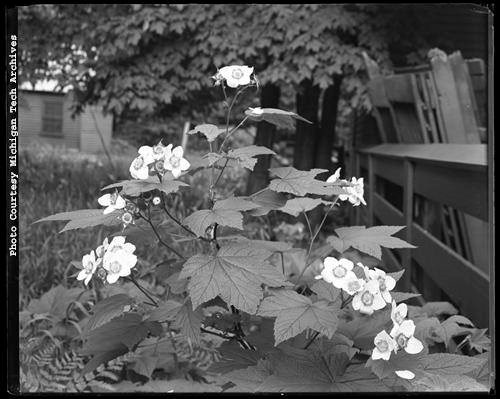
The native, beautiful, and delicious thimbleberry is a great pollinator species for butterflies and bees. The Keweenaw is famous for these berries which are made into jam or eaten right off the shrub. Both birds and mammals have been enjoying the delicate berries for a very, very long time. Yet another reason to thank these little pollinators who do a big job. https://www.fs.fed.us/wildflowers/plant-of-the-week/rubus_parviflorus.shtml7/12/2016 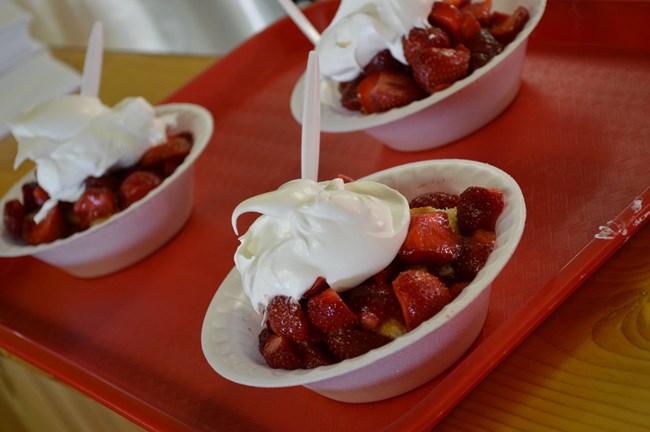
NPS photo 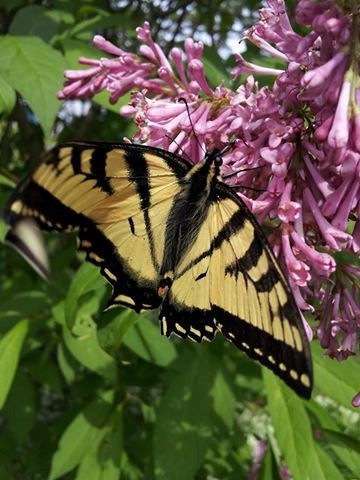
NPS photo 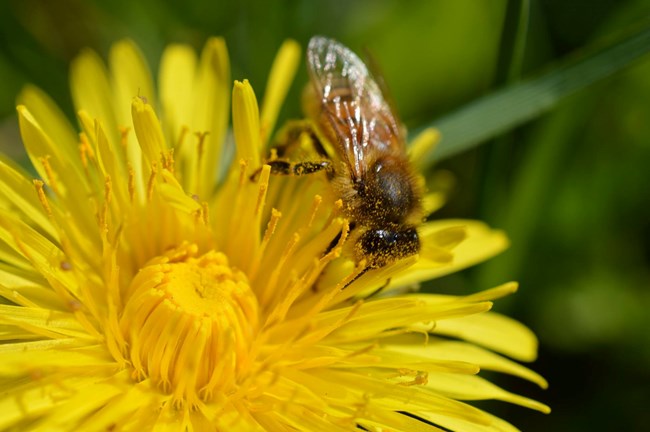
NPS photo Dandelions aren't all bad. They provide much needed early season nectar and pollen for our native pollinators such as bumblebees as well as for the introduced honeybees. These tiny creatures can have a big impact on crop yields or crop quality of many of our favorite fruits and vegetables. In some cases, crops are completely dependent on these insect pollinators. http://www.ncbi.nlm.nih.gov/pmc/articles/PMC3976118/6/21/2016 |
Last updated: June 8, 2022
